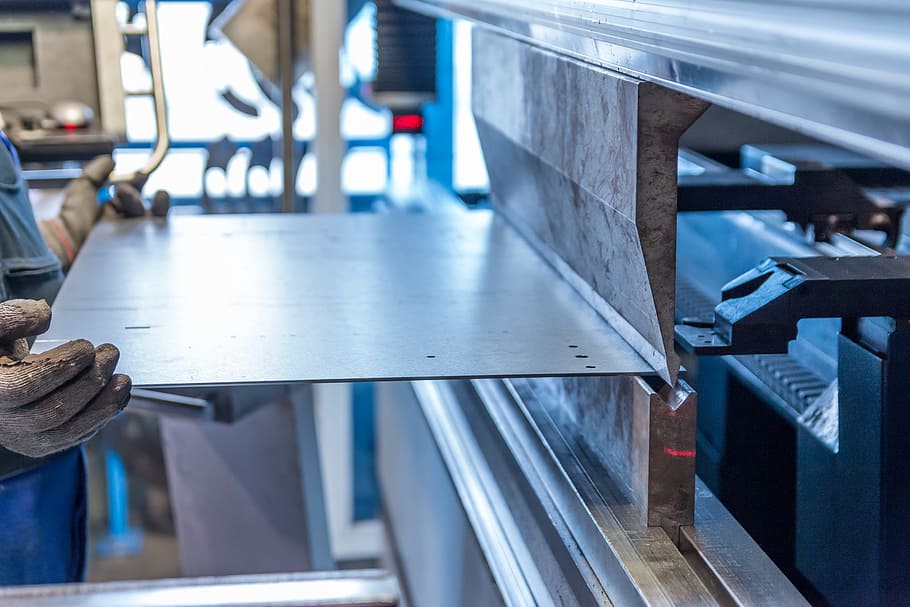Metal forming and processing are vital manufacturing techniques that have shaped industries, infrastructure, and countless products we use daily. From automotive components to aerospace parts and construction materials, metal forming plays a crucial role in transforming raw metal into complex shapes and structures.
Metal forming and processing involves altering the shape and properties of metal materials through mechanical force and temperature changes. These processes are integral to modern manufacturing because of their ability to create intricate and precise components with enhanced mechanical properties. The use of metal forming techniques has significantly advanced over the years, offering improved efficiency, reduced waste, and increased product quality.
Common Metal Forming Techniques

- Metal Planing:
Metal planing is a machining process used to produce flat and smooth surfaces on metal workpieces. Similar to wood planing, metal planing involves the removal of material from the workpiece using a cutting tool called a planer. The workpiece is firmly clamped on a planing machine’s bed, and the planer’s tool head moves back and forth, removing thin layers of metal with each pass.This process is beneficial for creating large, precise flat surfaces on heavy and bulky metal components, ensuring they meet strict dimensional requirements and surface finish specifications. Metal planing is commonly employed in industries like manufacturing, construction, and engineering, where precisely and accurately machined metal surfaces are critical for the successful assembly and functioning of various mechanical systems and structures. - Rolling: One of the most widely used metal forming techniques, rolling involves passing metal between rollers to reduce its thickness or form specific shapes. The process can be hot or cold, depending on the metal and the desired properties.
- Forging: Forging applies compressive forces to deform metal, typically at high temperatures. It enhances the metal’s strength and eliminates defects, producing components with exceptional mechanical properties.
- Stamping: Stamping employs dies and presses to cut or shape metal sheets into the desired form. It is commonly used in industries like automotive for producing panels and intricate parts.
- Extrusion: Extrusion pushes metal through a die to create complex cross-sectional profiles. It is employed in manufacturing long continuous products like pipes, rods, and tubing.
- Drawing: Drawing pulls metal through a die to reduce its diameter or form thin-walled products like wires and tubes.
- Advanced Metal Forming: Incremental Sheet Forming is an advanced metal forming process that involves deforming metal through a series of small steps, enabling the production of complex shapes without the need for specialized tooling.
Impact on Modern Manufacturing
- Design Flexibility: Metal forming techniques offer designers unparalleled freedom to create intricate and innovative shapes, resulting in enhanced product performance and aesthetics.
- Material Efficiency: Metal forming minimizes material wastage by using precise processes that optimize the use of raw materials, making it environmentally friendly and cost-effective.
- Enhanced Mechanical Properties: Processes such as forging and rolling refine the metal’s grain structure, resulting in superior mechanical properties, including strength, toughness, and fatigue resistance.
- Lightweighting: Metal forming allows the production of lightweight components without compromising strength, contributing to energy-efficient transportation and the aerospace industries.
- Mass Production: Stamping and extrusion enable high-volume production, making metal forming a crucial process for industries that require large quantities of standardized components.

Challenges and Future Trends:
While metal forming and processing have come a long way, there are still challenges to address, such as controlling material properties and optimizing process parameters. However, advancements in materials science, computer simulations, and automation are paving the way for exciting future trends in metal forming:
1. Additive Manufacturing: The integration of metal 3D printing with traditional forming techniques opens up new possibilities for complex designs and customized components.
2. Smart Manufacturing: Industry 4.0 technologies, such as the Industrial Internet of Things (IIoT) and artificial intelligence, will optimize metal forming processes through data-driven insights and predictive maintenance.
3. Lightweight Materials: The demand for lightweight materials in automotive and aerospace industries is driving research into novel alloys and hybrid materials that can be efficiently processed using metal forming techniques.
Metal forming and processing have profoundly impacted modern manufacturing, enabling the production of intricate, durable, and lightweight components used in various industries. As technology continues to advance, we can expect even more innovative metal forming processes that will further revolutionize the way we design and produce metal products. As the go-to resource for metal forming and processing, manufacturers will continue to push the boundaries of what is possible, shaping the future of our world.







